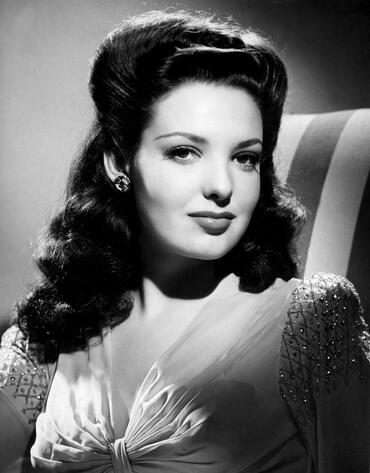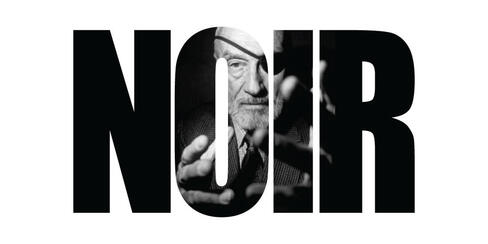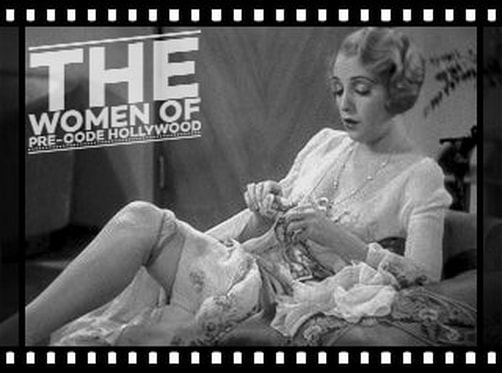LINDA DARNELL
AND FILM NOIR
Linda Darnell made notable contributions to the film noir genre with her captivating performances and ability to portray complex and alluring characters. Here are some of her significant roles and films within the film noir genre:
"Fallen Angel" (1945): Directed by Otto Preminger, this film noir features Darnell as Stella, a beautiful and mysterious woman caught in a love triangle. Her character exudes sensuality and danger, playing a pivotal role in the plot's twists and turns.
"No Way Out" (1950): In this racially charged film noir directed by Joseph L. Mankiewicz, Darnell portrayed Edie Johnson, a nurse caught between two brothers, one of whom is a racist and the other a black doctor. Darnell's performance showcased her ability to handle dramatic material and navigate morally complex situations.
"Night Without Sleep" (1952): Darnell starred as Alice, a troubled woman who becomes embroiled in a murder investigation. Her character is enigmatic and vulnerable, providing a strong anchor for the film's dark and suspenseful narrative.
In addition to these specific film noir roles, Darnell's screen presence and versatility allowed her to excel in other genres as well. However, her contributions to film noir were notable for her ability to embody the femme fatale archetype, captivating audiences with her beauty, allure, and ability to portray morally ambiguous characters.
Linda Darnell's talent and contributions to film noir continue to be appreciated, and she remains a memorable figure of the genre's classic era. Her performances added depth and complexity to the narratives, contributing to the overall atmosphere of suspense and intrigue that define film noir.
"Fallen Angel" (1945): Directed by Otto Preminger, this film noir features Darnell as Stella, a beautiful and mysterious woman caught in a love triangle. Her character exudes sensuality and danger, playing a pivotal role in the plot's twists and turns.
"No Way Out" (1950): In this racially charged film noir directed by Joseph L. Mankiewicz, Darnell portrayed Edie Johnson, a nurse caught between two brothers, one of whom is a racist and the other a black doctor. Darnell's performance showcased her ability to handle dramatic material and navigate morally complex situations.
"Night Without Sleep" (1952): Darnell starred as Alice, a troubled woman who becomes embroiled in a murder investigation. Her character is enigmatic and vulnerable, providing a strong anchor for the film's dark and suspenseful narrative.
In addition to these specific film noir roles, Darnell's screen presence and versatility allowed her to excel in other genres as well. However, her contributions to film noir were notable for her ability to embody the femme fatale archetype, captivating audiences with her beauty, allure, and ability to portray morally ambiguous characters.
Linda Darnell's talent and contributions to film noir continue to be appreciated, and she remains a memorable figure of the genre's classic era. Her performances added depth and complexity to the narratives, contributing to the overall atmosphere of suspense and intrigue that define film noir.
VIDEO TRIBUTE:
Linda Darnell

Linda Darnell, born on October 16, 1923, was an American actress known for her beauty, talent, and versatility. She rose to fame in the 1940s and 1950s, appearing in numerous films and establishing herself as one of Hollywood's leading ladies.
Darnell was born Monetta Eloyse Darnell in Dallas, Texas. She began her acting career at a young age, signing a contract with 20th Century Fox when she was just 15 years old. She made her film debut in 1939 in the movie "Hotel for Women," playing a small role.
In the early 1940s, Darnell started gaining attention for her performances in films such as "Blood and Sand" (1941) and "Forever Amber" (1947), where she played the lead roles. Her talent, beauty, and sensuality captivated audiences, and she became a popular pin-up girl during World War II.
Darnell was known for her ability to portray a wide range of characters, from innocent and vulnerable to seductive and complex. She appeared in various genres, including film noir, drama, and westerns. Some of her notable film noir roles include "Fallen Angel" (1945), "No Way Out" (1950), and "Night Without Sleep" (1952). She displayed a talent for playing conflicted and mysterious women, often embodying the femme fatale archetype.
Despite her success on screen, Darnell faced challenges in her personal life and struggled with alcoholism. In the 1950s, her career began to decline due to a combination of personal issues and changes in the film industry.
Darnell continued to work in film and television throughout the 1960s and early 1970s, making appearances in shows like "Bonanza" and "The Virginian." However, she never regained the same level of stardom she had enjoyed earlier in her career.
Tragically, Linda Darnell's life was cut short at the age of 41. On April 10, 1965, she was involved in a house fire at her friend's home in Chicago and suffered severe burns. Despite being hospitalized and receiving medical treatment, she succumbed to her injuries on April 10, 1965.
Linda Darnell's talent, beauty, and contributions to film continue to be remembered and appreciated. She left a lasting impact on the Golden Age of Hollywood, particularly through her memorable performances in film noir and her ability to embody a wide range of characters.
Darnell was born Monetta Eloyse Darnell in Dallas, Texas. She began her acting career at a young age, signing a contract with 20th Century Fox when she was just 15 years old. She made her film debut in 1939 in the movie "Hotel for Women," playing a small role.
In the early 1940s, Darnell started gaining attention for her performances in films such as "Blood and Sand" (1941) and "Forever Amber" (1947), where she played the lead roles. Her talent, beauty, and sensuality captivated audiences, and she became a popular pin-up girl during World War II.
Darnell was known for her ability to portray a wide range of characters, from innocent and vulnerable to seductive and complex. She appeared in various genres, including film noir, drama, and westerns. Some of her notable film noir roles include "Fallen Angel" (1945), "No Way Out" (1950), and "Night Without Sleep" (1952). She displayed a talent for playing conflicted and mysterious women, often embodying the femme fatale archetype.
Despite her success on screen, Darnell faced challenges in her personal life and struggled with alcoholism. In the 1950s, her career began to decline due to a combination of personal issues and changes in the film industry.
Darnell continued to work in film and television throughout the 1960s and early 1970s, making appearances in shows like "Bonanza" and "The Virginian." However, she never regained the same level of stardom she had enjoyed earlier in her career.
Tragically, Linda Darnell's life was cut short at the age of 41. On April 10, 1965, she was involved in a house fire at her friend's home in Chicago and suffered severe burns. Despite being hospitalized and receiving medical treatment, she succumbed to her injuries on April 10, 1965.
Linda Darnell's talent, beauty, and contributions to film continue to be remembered and appreciated. She left a lasting impact on the Golden Age of Hollywood, particularly through her memorable performances in film noir and her ability to embody a wide range of characters.
quotes:
[about her time at Twentieth Century-Fox] "Leaving Fox was like leaving home at 28; I'd been there since I was 16."
- Linda Darnell
trivia:
Died in a fire of unknown origin while visiting friends. While sleeping upstairs and awakened by smoke, she tried to exit through the downstairs door but was trapped. Badly burned over 90% of her body she died the following day in the hospital.
Suffered from alcoholism during most of her career.
Was allergic to horses.
Tuptim, her character in Anna and the King of Siam (1946), was executed by being burned at the stake. In real life, Linda died at age 41 from burns received in a house fire.
Suffered from alcoholism during most of her career.
Was allergic to horses.
Tuptim, her character in Anna and the King of Siam (1946), was executed by being burned at the stake. In real life, Linda died at age 41 from burns received in a house fire.




